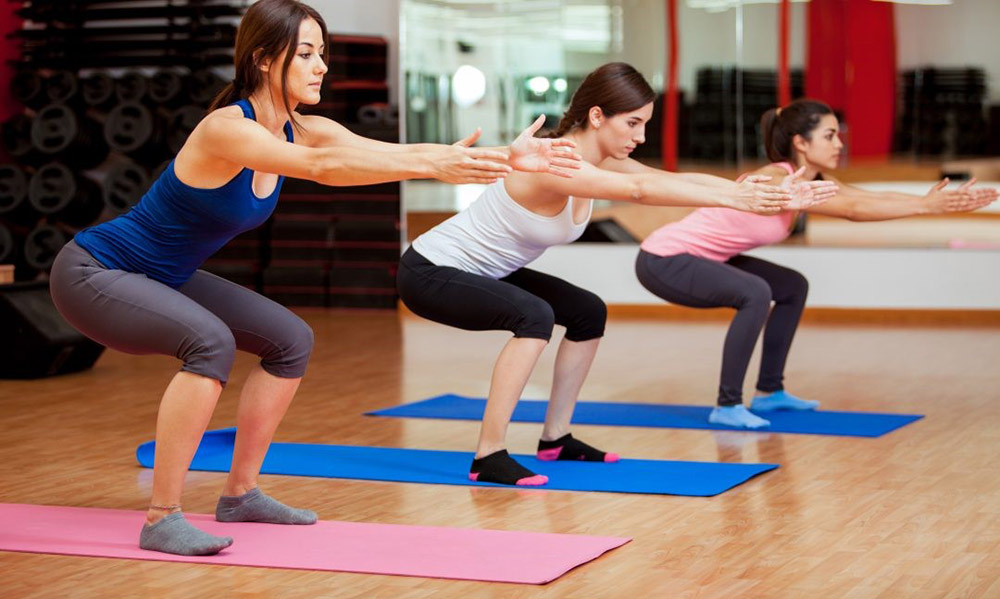Ten ways to help you cope with incontinence that you may not know
Editorial Feature
As you get older, it’s important to stay aware of potential health issues that may crop up. Checklist have teamed up with PhysioFast Online to help you learn about incontinence.
Incontinence refers to any involuntary loss of urine, wind or faeces. It is incredibly common with around 400 million people affected worldwide, and affects an estimated 20% of people over 40 years old. One in three women and one in nine men suffer from urine incontinence and anal incontinence affects between two and 15 percent of adults.
Whilst incontinence affects a surprisingly large amount of the population, misconceptions are common and many people don’t quite understand what it is. Checklist is here to help inform you about this condition.
1. There are three different types of incontinence

Stress incontinence
Stress incontinence is the most common and for women it is often brought on by pregnancy and the menopause. It can be caused by weak pelvic floor muscles, resulting in small leakages when the bladder is under pressure, when you are coughing, sneezing, laughing or sometimes during exercise.
Urge incontinence
Urge incontinence is also known as overactive bladder and this type of incontinence is caused by the bladder muscles contracting too often. Leakages occur alongside a sudden, intense, uncontrollable urge to pass urine. This can be made worse by drinking too much caffeine or alcohol, not drinking enough of other fluids, or because of urinary tract infections.
Overflow incontinence
Overflow incontinence is also known as chronic urinary retention. Here, the bladder doesn’t completely empty when passing urine. In women it can be caused by an obstruction of the bladder, such as urinary stones. If you have overflow incontinence, you may pass small trickles of urine very often and may also feel as though your bladder is never fully empty.
In rare cases incontinence can be a symptom of an underlying medical condition and if you have any concerns you should seek medical advice.
2. It can be treated without drugs or surgery

Katie Knapton, CEO of PhysioFast Online believes that incontinence can often be treated without drugs or surgery through exercises that improve the strength of your pelvic floor muscles.
She states: “One of the main causes of incontinence in both men and women is weak pelvic floor muscles. If your incontinence is due to a weak pelvic floor, try physiotherapy first to strengthen these muscles before considering an operation. Physiotherapy can help with both bladder and bowel incontinence.”
Research has shown that pelvic floor muscle training is cheaper and more effective than one of the main incontinence drugs. Other research compared non-surgical treatments and found that intensive pelvic floor muscle training, plus lifestyle changes, was the most effective method for treating urinary and bowel incontinence.
3. Anyone can be affected

Knapton believes that incontinence can affect anyone, not just unfit and overweight people. High-performing athletes such as runners can have incontinence issues as they can overload their pelvic floor muscles.
Or someone taking a high resistance exercise programme up again can just overload the system leading to leakage and pelvic floor weakness. She comments: “We see this a lot when women are returning to high-intensity activity and sports post birth which can overload the poor weakened pelvic floor.”
It is a condition that affects both men and women, young and old, and yet it is rarely talked about and many people are too embarrassed to seek help.
According to Knapton, it takes an average of seven years for a person to seek help and causes huge social issues, with people scared to go out and socialise and often creates real anxiety. Knapton said: “The good news is that there is gold standard evidence that the majority can be helped and some completely cured just by exercises themselves.”
Pelvic floor exercises can help with all types of incontinence and there is an 80% cure rate for stress incontinence with exercises and physiotherapy, it is the recommended first line of treatment.
And whatever type of incontinence you have, in general getting more familiar with your pelvic floor and also your breathing patterns can help.
4. Incontinence is more likely with increased age

While the development of incontinence is not inevitable, it is much more likely to appear as you get older. Particularly, women over 50 are most likely to develop the condition, with over half ladies between 50 and 80 affected with urinary incontinence.
It is not guaranteed to affect you but you should still be aware of the possibility of it developing so you can act as soon as possible to minimise its impact on your life.
5. Kegels are great exercise

Pelvic Floor exercises are sometimes called Kegels and the best way to describe them is to imagine you are trying not to pass wind, or in other words holding in a fart.
They should include long, held squeezes as well as short, quick squeezes; ensuring that you let the muscle ‘go’ or ‘relax’ after each squeeze. You should work the muscles until they tire and do the exercises regularly to help the muscles become stronger and more effective.
6. Breathing is key

It is recommended that prior to doing the exercises you take a breath in and then sigh out and continue normal breathing throughout the exercises.
This helps to recruit the muscles in the right way and avoids the pushing or bearing down that often happens.
7. Don’t get discouraged

You may need to start with ‘little and often’ if you find that you can only hold the squeeze for a short time, or only do a few before the muscles tire.
Aim for 10 long squeezes, holding each squeeze for 10 seconds, followed by 10 short squeezes.
These exercises should be done at least three times a day. You may find it easier to start your program when you are sitting or lying down.
8. Build a routine

Build up your exercise routine gradually over the weeks and months. You should notice an improvement in three to five months and then keep practising your pelvic floor muscle exercises once a day to maintain the improvement.
As your muscles improve, aim to do your exercises in other positions such as standing up. Eventually you can practice using these muscles whilst doing activities such as walking and bending. Continue to breathe normally throughout.
9. Technique

Vary between long and short squeezes to maximise your exercise’s effectiveness.
For long squeezes, tighten your pelvic floor muscles, hold them tight, then release and let them fully relax. How long can you hold the squeeze? Try and build on that. Repeat the squeeze and hold until the pelvic floor muscles tire. How many times can you repeat the squeezes? Try and increase that,
When trying short squeezes, quickly tighten your pelvic floor muscles, then immediately let them go again. How many times can you do this quick squeeze before the muscles get tired?
Always let the muscles fully relax after each squeeze.
10. Men have a pelvic floor too

One in 9 men suffer with incontinence and the severity can be anything from an annoying dribble after you have finished urinating, to always feeling that your bladder is full, even after you have just been to the toilet.
Some men may also experience varying degrees of unexpected urine loss following prostate surgery. These kinds of urinary problems can affect every part of your life and can lead to some men not wanting to be socially active.
Male incontinence can be caused by a damaged or narrowing of the urethra, the exit tube from the bladder, nerve damage, infections of the urinary tract or prostate problem; with many men also experience some short-term urinary incontinence following prostate surgery.
The good news is that men too have a pelvic floor and that exercising can significantly improve incontinence. The pelvic floor needs to be strong and have a good blood supply.
This article was produced in collaboration with PhysioFast Online.
To see your company in any upcoming features we are arranging please email laura@hurstmediacompany.co.uk or editorial@hurstmediacompany.co.uk






